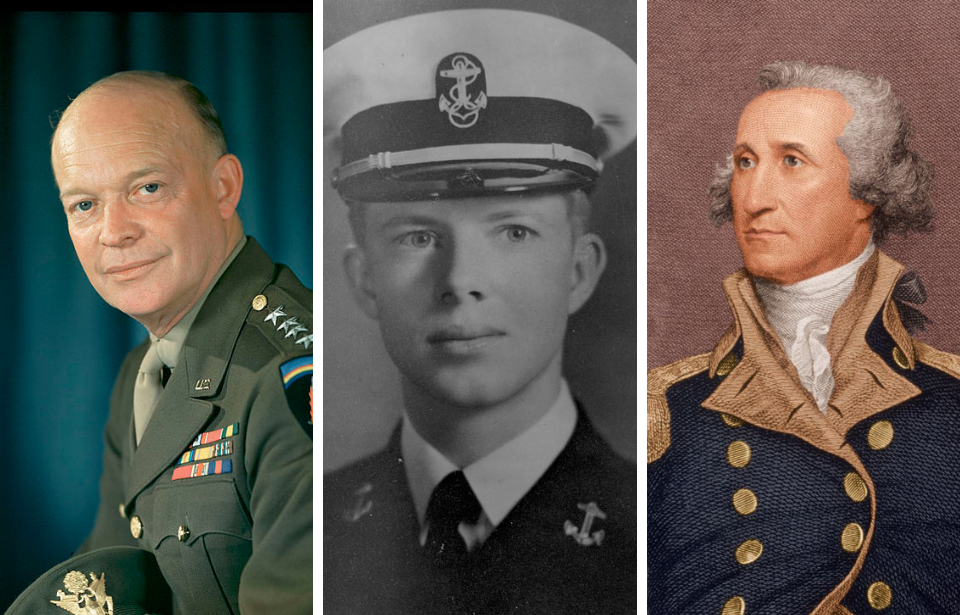Well over 50 percent of the men who’ve served as president of the United States have also seen service in the military – in war, in peacetime or both. This has largely been a positive for their election hopes and relationships with top military brass, but, during other times, it’s been overlooked or even downplayed.
Lyndon B. Johnson, Richard Nixon, Gerald Ford… All of them were US Navy veterans, but their military pasts remained in the background during their presidencies, given many Americans were leery of the “Establishment.” Other presidents were able to use their service to their advantage, including John F. Kennedy, the hero of the PT-109 story. That said, George H.W. Bush did point out his history as a decorated combat pilot during the Second World War.
The following is a list of all the US presidents who served in the military.
George Washington
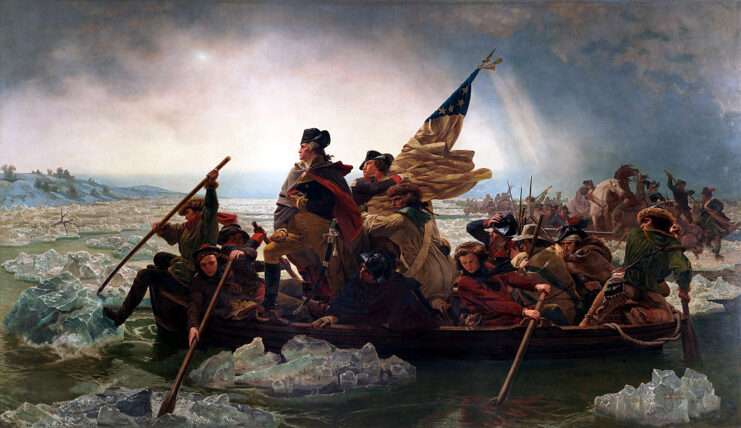
Everyone is aware that the first ever president of the US, George Washington, served in the military. In fact, it was his command of the Continental Army during the American Revolution that afforded him the opportunity to become the country’s first leader, post-British rule.
What many forget, however, is that Washington came to the attention of the Continental Congress for more reasons than just his contributions to America’s independence. Sure, he showed himself a dedicated and commanding leader while leading his men to victory in the likes of the Yorktown Campaign, but he also captured attention for his service with the Virginia Militia in the French and Indian War.
Thomas Jefferson
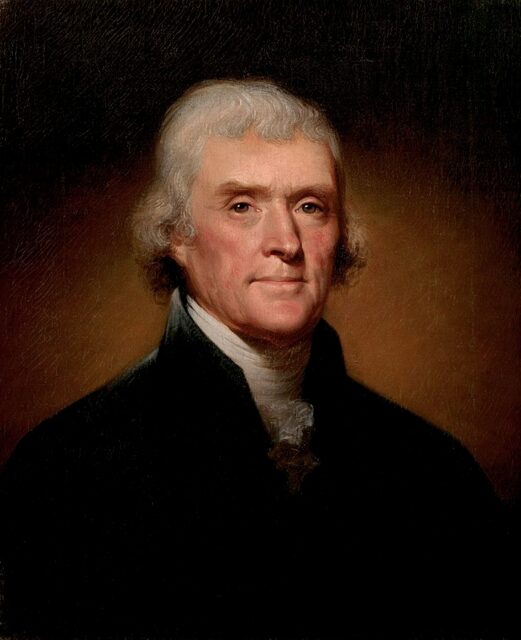
While Thomas Jefferson is known more for being one of the Founding Fathers, as well as the third president of the US, he also participated in military service. At the onset of the American Revolution, he was a colonel in the Virginia Militia and went on to become the commander of the Albemarle County Militia.
A year after joining the latter, he was elected to the Virginia House of Delegates.
James Madison
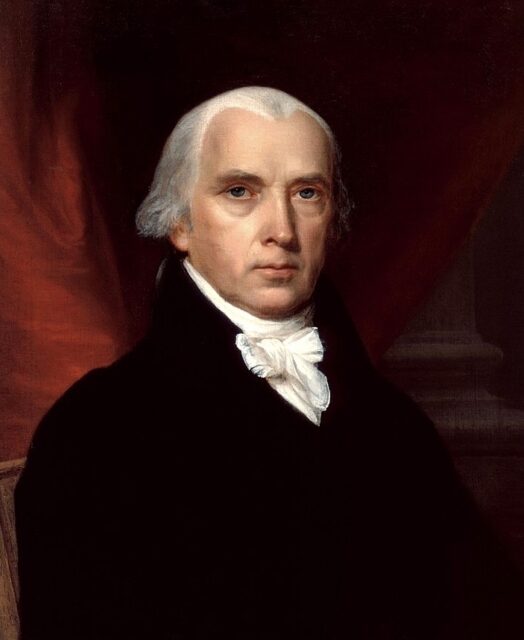
James Madison served as the fourth president of the US, having been a Founding Father and, more famously, the “Father of the Constitution” for his efforts in drafting and promoting both the US Constitution and the Bill of Rights. He’s arguably one of the most influential political figures in American history, but that’s not where his impact stops.
A member of the Orange County Militia, a unit of the Virginia Militia, during the American Revolution, he was among those willing to fight for the country’s freedom. Sadly, he was too poorly to ever see combat.
The next conflict he was involved in was the War of 1812, but, instead of being a fighter, he was the sitting president. He managed to escape the enemy forces following the American loss in the Battle of Bladensburg, which resulted in the capture and burning of Washington, DC.
James Monroe
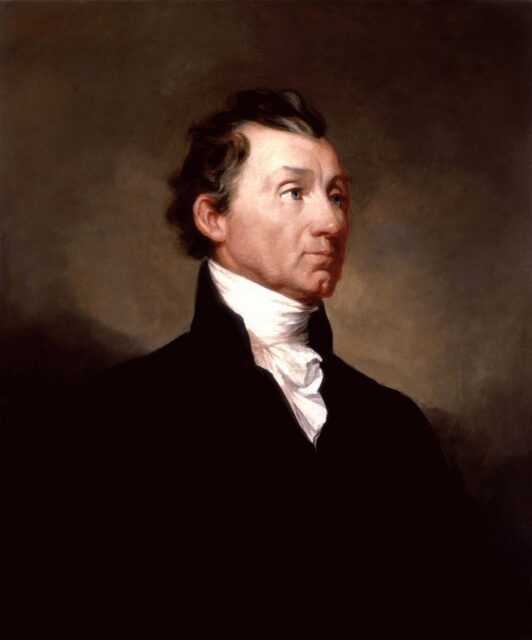
Founding Father James Monroe served as both the fifth president of the United States and as a military officer in the Continental Army during the American Revolution. In 1776, he dropped out of college and enlisted in the 3rd Virginia Regiment, with whom he served in the New York and New Jersey Campaign, under the leadership of George Washington.
During the Battle of Trenton, Monroe was severely wounded, suffering a severed artery that almost ended his life. Washington recognized him for this bravery, promoting him to the rank of captain, and he later served in the Philadelphia Campaign. He is regarded as the last president to have been a veteran of the Revolutionary War, despite Andrew Jackson serving as a militia unit courier at the age of 13.
Andrew Jackson
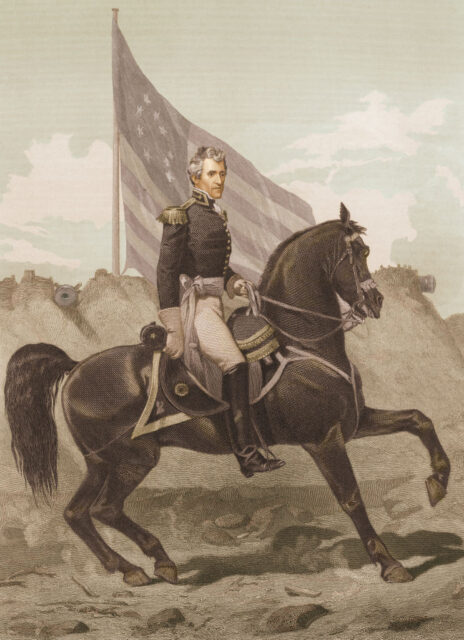
Andrew Jackson, the seventh president of the US, was a famous name well before he was elected into office, thanks to his military service – in particular, his leadership during the Battle of New Orleans in the War of 1812.
Upon the outbreak of the conflict, Jackson immediately offered to raise an army of volunteer soldiers, but was ignored until early 1813, after the American forces had suffered severe losses against the British. After putting together a group of 2,000, he was told his services were no longer needed, and it wasn’t until the regional Creek War that summer that he saw action.
During the Battle of New Orleans in 1815, which took place after the signing of the Treaty of Ghent, a contingent of 5,700 US troops took on 8,000 British, securing a hard-fought victory. Following this, Jackson became involved in the Seminole Wars down in Florida, after which he made the decision to leave the military and run for president.
William Henry Harrison
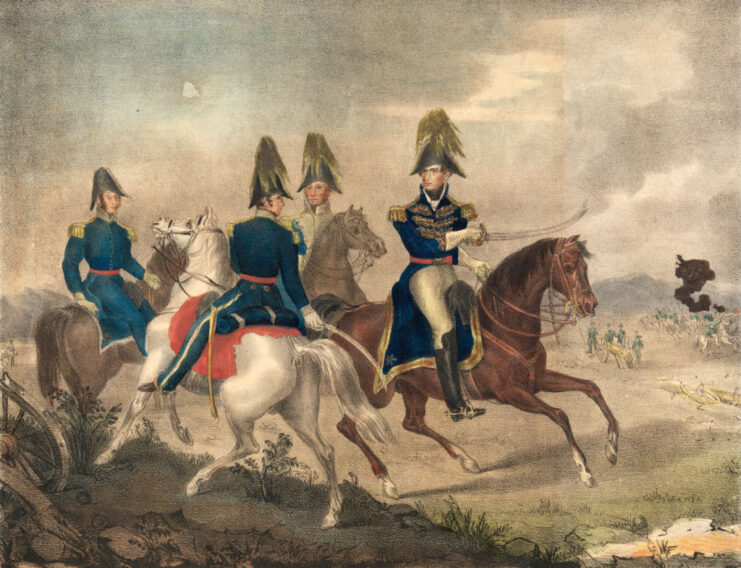
While future president William Henry Harrison first saw military action during the Northwest Indian War as part of the Battle of Fallen Timbers, it was the outbreak of violence in 1811 between the Shawnee tribe and the ever-expanding American government that saw him thrust onto the military stage.
At the time, Harrison was serving as the governor of the Indian Territory and, at the confluence of the Tippecanoe and Wabash rivers, he and his 1,000-man force were surprised by a group of about 700 Indigenous warriors, led by famous Shawnee leader Tecumseh. While outnumbered by the latter’s forces, Harrison and his men came out victorious after two hours of fighting.
When the War of 1812 broke out, Harrison, now a major general, continued to lead his men to victory, defeating the British in the Battle of the Thames in Upper Canada, now Chatham-Kent, Ontario. Again up against Tecumseh’s forces, the Americans won the fight, which saw the dissolution of the chief’s Confederacy.
John Tyler
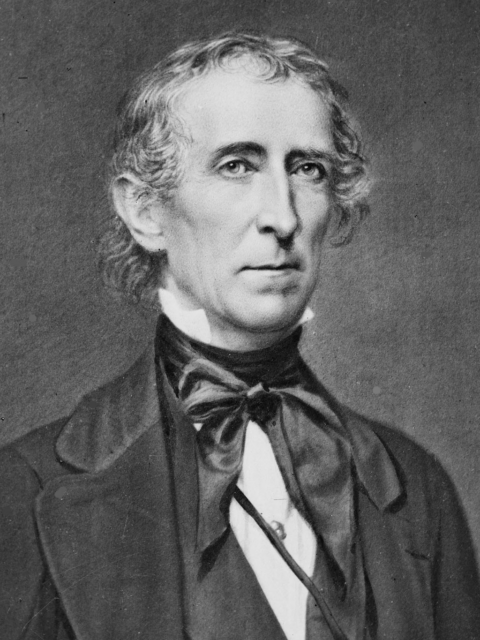
US President John Tyler came into office following the death of William Henry Harrison, who holds the record for the shortest time in the position, at 31 days. Upon the outbreak of the War of 1812, Tyler, who was staunchly anti-British, organized a militia force – the Charles City Rifles – that he led with the rank of captain.
In Richmond, Virginia at the time, Tyler believed an attack would occur. When none came, his militia was disbanded. For his military service, the future president was given land in what’s now Sioux City, Iowa.
James Buchanan
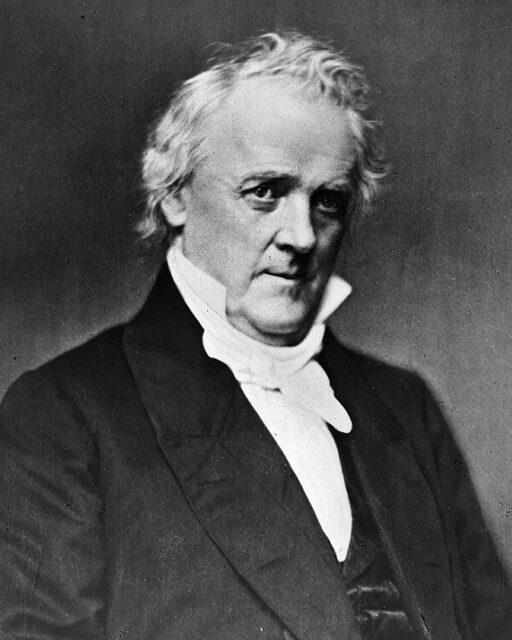
The 15th president of the US, James Buchanan served during the War of 1812. He was a member of Henry Shippen’s Company, 1st Brigade, 4th Division, Pennsylvania Militia, with whom he participated in the Battle of Baltimore, which saw the Americans defeat their British enemy.
Buchanan is the only president to have served in the military and not been an officer – he was a private.
James K. Polk
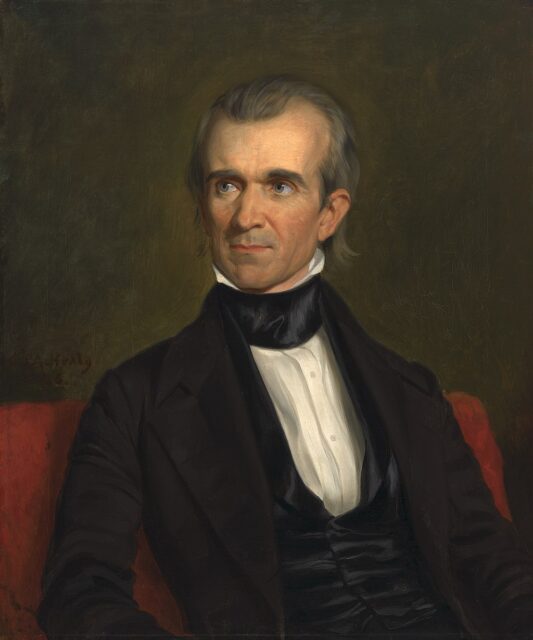
James K. Polk might not be known for his military service, but he did serve prior to becoming president. In the 1820s, he was commissioned as a captain in the Tennessee Militia – in particular, with the Maury County Cavalry, 5th Brigade. Serving from 1821-25, the future president didn’t see combat.
In 1845, Polk assumed his position in the White House, serving as America’s leader until 1849, at which point he was replaced by Zachary Taylor.
Zachary Taylor
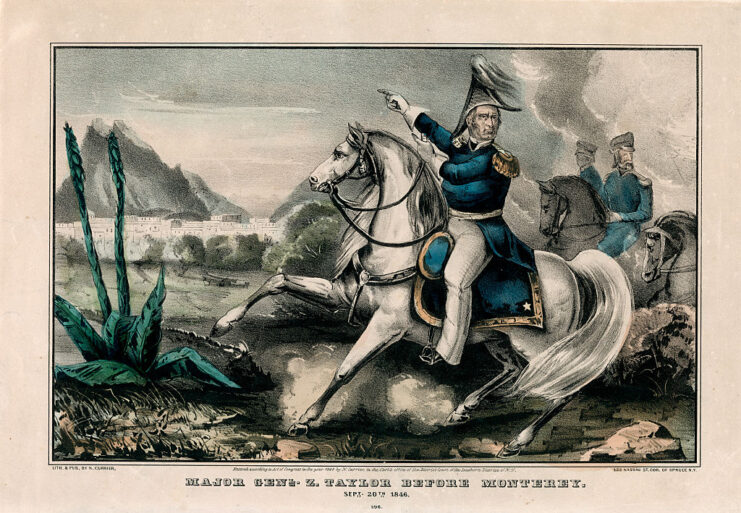
Zachary Taylor, the 12th president of the US, was perhaps the most accomplished military man to lead the country before Ulysses S. Grant, who served under him during his military service. He became an Army officer in 1808 and fought with distinction in the War of 1812, the Black Hawk War and the Second Seminole War.
Prior to the outbreak of the Mexican-American War, Taylor was serving in the US Army with the rank of general. After securing victories during the battles of Palo Alto and Resaca de la Palma, despite being outnumbered, he received praise, and his success with the battles of Monterrey and Buena Vista earned him the undue respect of his men.
While elected into office in 1849, Taylor only served 16 months before dying from complications of dysentery.
Franklin Pierce
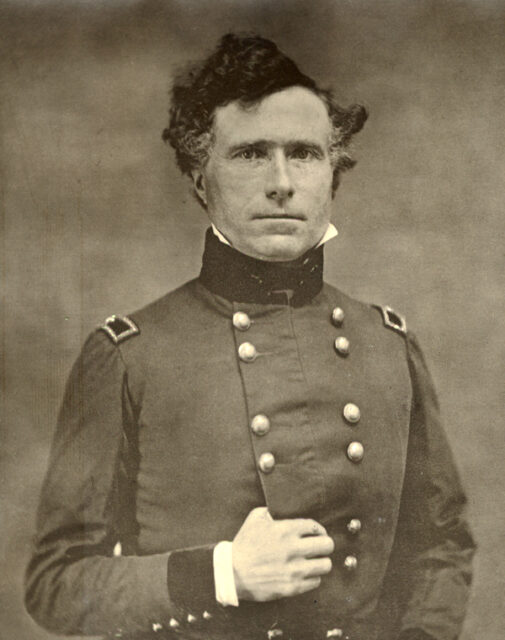
Franklin Pierce served as both a congressman and senator before becoming a general during the Mexican-American War. He ably led his men in combat, but was plagued throughout the conflict by injury and sickness, seeing the conclusion of the fighting from a hospital tent.
While only serving in the military for a short while, his time in combat greatly boosted his public image, aiding in his campaign to become president. He was elected in 1852, serving just one term.
Abraham Lincoln
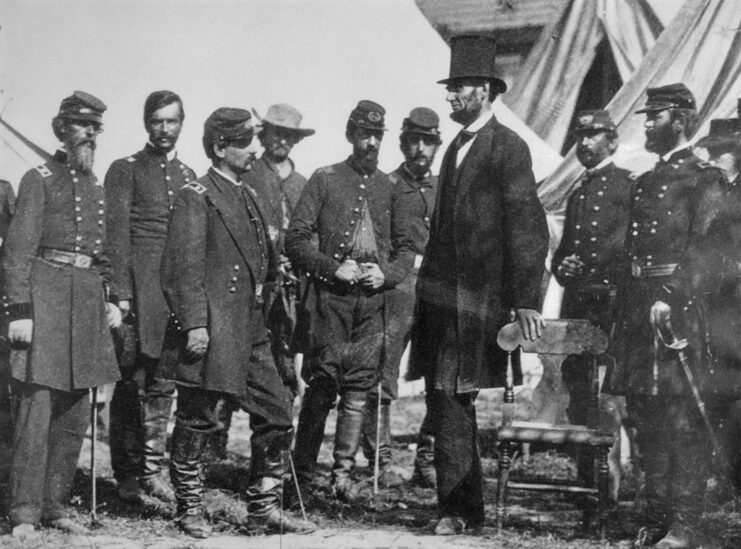
While Abraham Lincoln is best known for being the president of the Union during the American Civil War, he did briefly serve in the Illinois Militia during the Black Hawk War. At the time, he’d been running for the Illinois House of Representatives, and while he was named captain of his company, he never actually saw combat.
After assuming office in 1861, Lincoln led the country until he was assassinated by John Wilkes Booth in April 1865.
Andrew Johnson
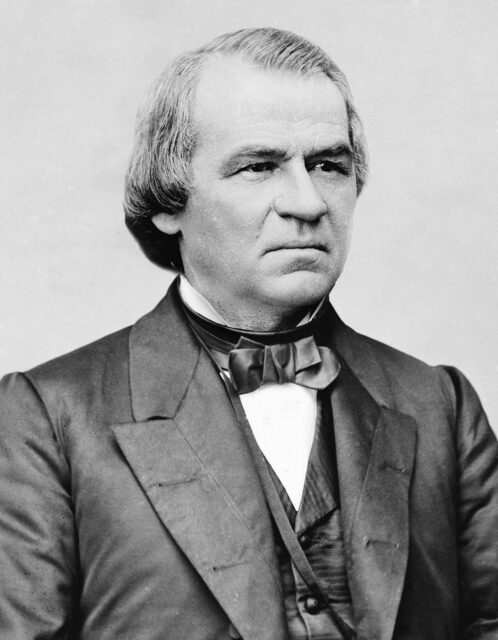
Andrew Johnson, the 17th president of the US, was appointed the military governor of Tennessee during the American Civil War. Prior to this, he’d served with the 90th Regiment of the Tennessee Militia, reaching the rank of colonel.
Johnson took a strong stance against secession and worked to keep Tennessee in the Union during the Civil War. This service played a significant role in his political career and contributed to his selection as Abraham Lincoln’s running mate in the 1864 presidential election.
Ulysses S. Grant
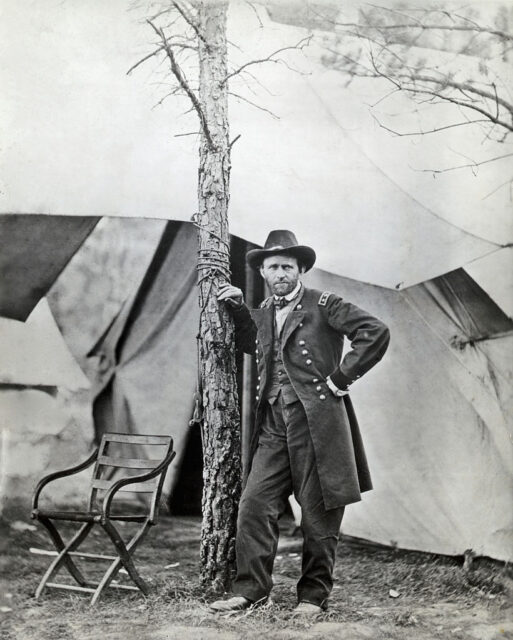
A list of presidents with military experience would be incomplete without Ulysses S. Grant, a legendary figure from the American Civil War. Before the onset of the conflict, Grant had successfully navigated the US Military Academy West Point and was among those who participated in the Mexican-American War.
Over the course of the Mexican-American War, Grant showcased remarkable leadership skills and a proactive approach. Although he initially served as a quartermaster, he swiftly sought out opportunities to participate in direct combat, taking control of cavalry charges against the opposing forces.
As the Civil War unfolded, Grant secured a string of triumphs against the Confederate Army, solidifying his reputation as a military strategist. Throughout the conflict, he engaged in intense battles with Robert E. Lee, facing off notably during the Overland Campaign and at Petersburg, all of which culminated in Grant’s decisive victory at Appomattox.
Millard Fillmore
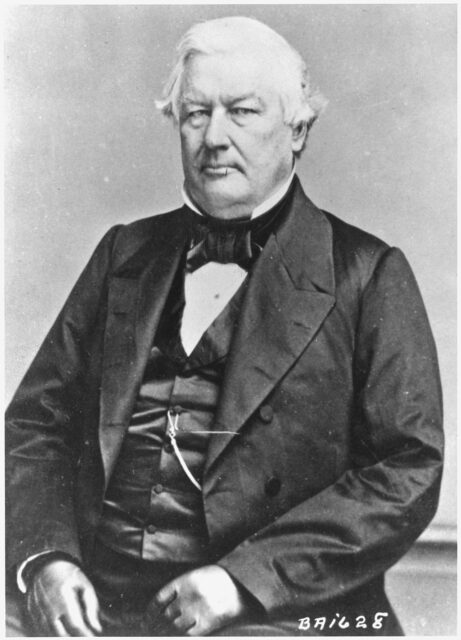
Millard Fillmore was an ardent supporter of Abraham Lincoln and the Union forces during the American Civil War. He became involved in military service during the conflict, commanding a group of older servicemen – the Union Continentals – who were tasked with defending the Buffalo area in the event of a Confederate attack.
Fillmore remained active with the group up until his death. He assumed office as the 13th president of the US in 1850, becoming the last member of the Whig Party to serve in the White House.
Rutherford B. Hayes
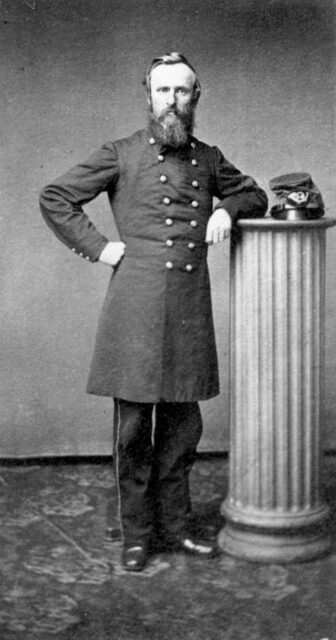
Rutherford B. Hayes was a lawyer and influential local politician in Ohio before enlisting in the Union Army during the American Civil War. While initially weary of a conflict against the South, he changed his tune following the events at Fort Sumter, going on to serve with the 23rd Regiment of the Ohio Volunteer Infantry.
A man of undoubted bravery, Hayes saw action many times throughout the war, and more often than not was on the winning side of the fighting. He fought all over Virginia, taking part in battles both large and small. The Battle of South Mountain, in particular, showcased his aptitude as a military leader. After being shot in his left arm, he simply had one of his men tie a handkerchief over the wound, as he was determined to keep fighting.
James Garfield
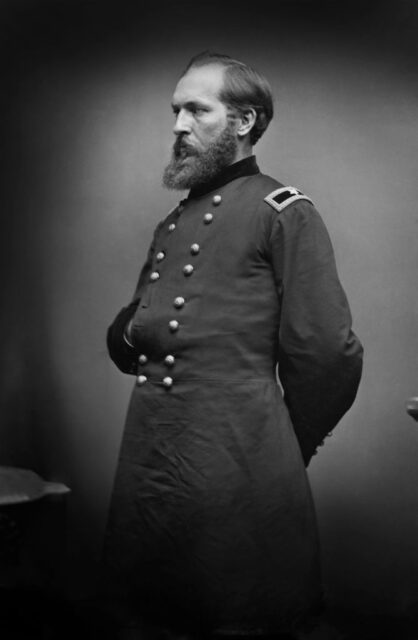
James Garfield became the 20th president of the US and was the second to die by an assassin’s bullet.
Before assuming office, he’d commanded the 42nd Ohio Regiment during the American Civil War, seeing action at Middle Creek, Chickamauga and Shiloh. Following these three engagements, Garfield didn’t see much action on the battlefield. Instead, he filled a number of roles, such as becoming Gen. William Rosecrans’ chief of staff, before being mustered out of the Union Army due to illness.
Garfield entered office in 1881. In July of that year, while at the Baltimore and Potomac Railroad Station in Washington, DC, he was shot in the back by Charles J. Guiteau. The president passed away 79 days later.
Chester Arthur
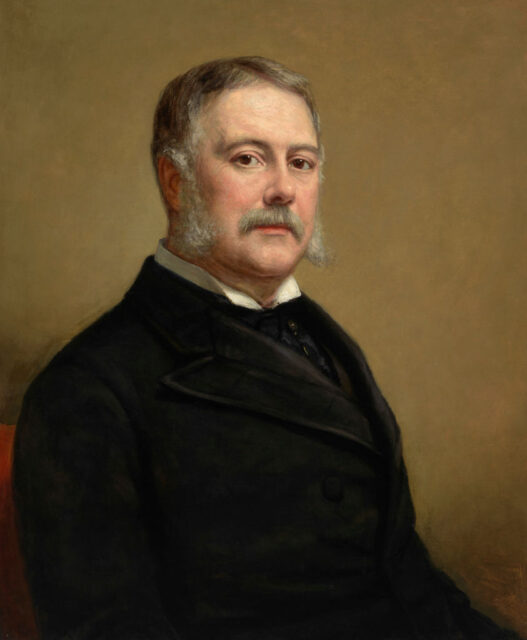
Chester Arthur was vice president when James Garfield was assassinated in 1881. Prior to entering office, he, too, had served in the American Civil War. However, unlike his counterpart, he never saw combat, given his position in the Quartermaster Corps.
Early in the conflict, Arthur had the opportunity to join the action on the frontlines, having been asked to transfer to the 9th New York Volunteer Infantry Regiment. He declined the chance at the behest of Gov. Edwin D. Morgan, something he’d do a number of other times throughout the war.
Benjamin Harrison
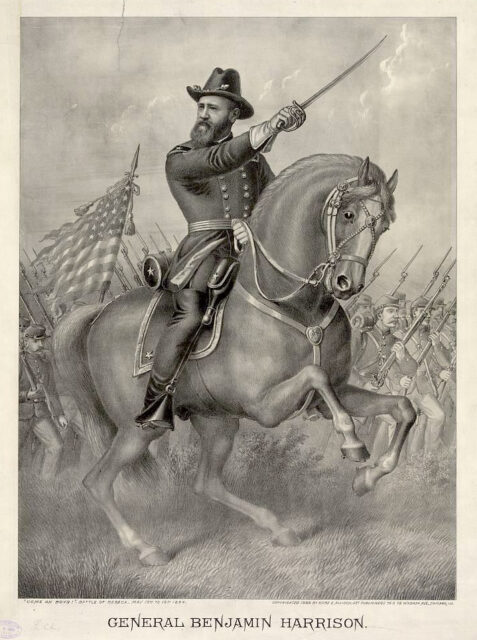
One-term President Benjamin Harrison was among those to see military service during the American Civil War. While initially hesitant to enlist over concerns about supporting his family, he was later asked to put together a regiment, which he did. It was not long after that he was commissioned into the 70th Indiana Infantry Regiment, under the Union Army.
After a few years of conducting reconnaissance patrols, Harrison and the 70th joined William T. Sherman’s Atlanta Campaign, serving as the frontline infantry in his famous March to the Sea. Not long after the campaign began, Harrison was transferred, which resulted in him seeing action at the Battle of Nashville.
However, it would be his gallantry during the Battle of Resaca that solidified the future president’s place in military history. Up against Confederate artillery, he and his men were able to overrun the position and secure a victory in what became a hand-to-hand combat engagement.
William McKinley
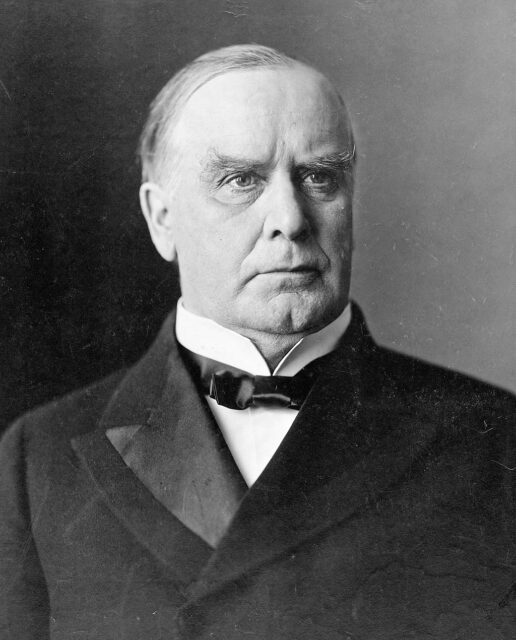
William McKinley was the last US president to have served in the American Civil War. After enlisting in the 23rd Ohio Infantry Regiment, under the command of Rutherford B. Hayes, he took part in several early engagements in West Virginia, as well as the Second Battle of Bull Run, Antietam and the Shenandoah Valley Campaign.
Twice elected as president, McKinley was assassinated on September 6, 1901, while at the Pan-American Exposition. The third man in office to suffer such a fate, his death came at the hands of American laborer and anarchist Leon Czolgosz, who shot him twice in the abdomen.
Theodore ‘Teddy’ Roosevelt
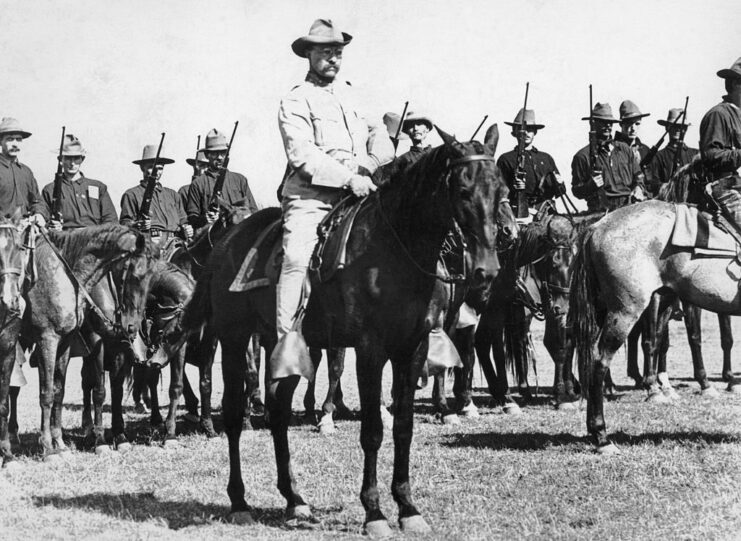
Theodore “Teddy” Roosevelt stands out as one of America’s most revered and iconic presidents. Despite a challenging start as a frail child, he triumphed over his adversities and embraced a robust way of life. Engaging in a diverse range of activities, such as exercise, biking, hunting, sports, writing books and even martial arts, he epitomized what many considered the embodiment of a masculine lifestyle.
Roosevelt played a pivotal role in the Spanish-American War, taking decisive action by directing ships to ready for conflict with Spain in the aftermath of the USS Maine (1889) explosion in Cuba. When the conflict erupted, he resigned from his position as assistant secretary of the Navy to lead troops into battle. Rallying volunteers, he created a cavalry division known as the “Rough Riders.”
During the Battle of Kettle Hill, Roosevelt led a daring uphill assault, meriting a Medal of Honor nomination. While the recognition was initially withheld, he was posthumously bestowed with the distinction in 2001.
Harry Truman
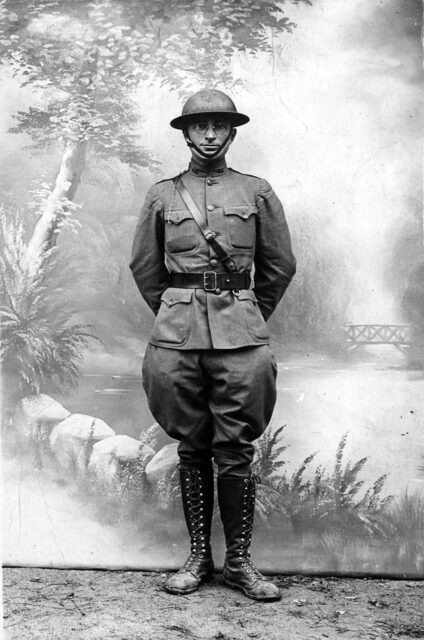
Harry Truman served with the Missouri National Guard prior to the outbreak of the First World War. Upon the US entry into the conflict in 1917, he rejoined Battery B, 2nd Missouri Field Artillery Regiment, which became the 129th Field Artillery Regiment of the US Army.
By 1918, the future president had been promoted to captain, with him being given command of Battery D, 129th Field Artillery Regiment, 35th Division that July. His time with the battery got off to a rocky start, with him disliked by his men for trying to implement discipline among the unruly troops.
The Meuse-Argonne Offensive was the event that defined Truman’s military service. He used his skills and knowledge to score victories against the Germans, and none of the members of Battery D were lost in France while under his command. It was this leadership that ultimately secured him the presidency over two terms.
Dwight D. Eisenhower
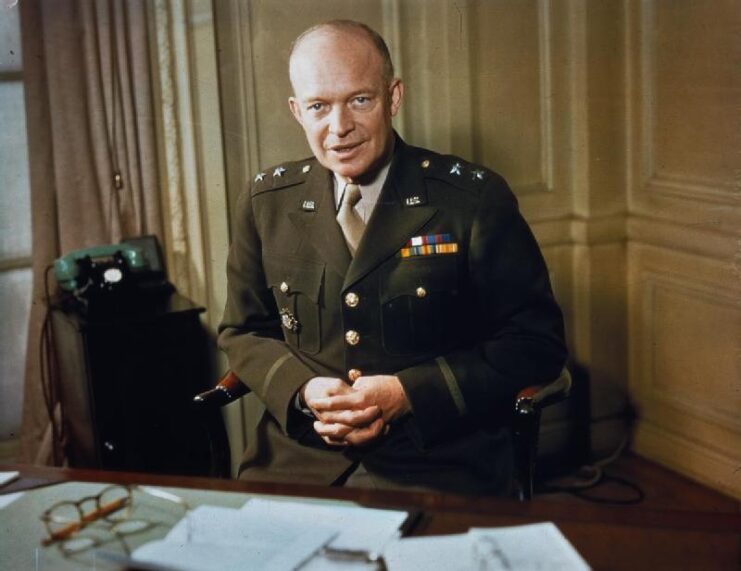
Dwight D. Eisenhower is best known for his pivotal role as Supreme Commander of the Allied Forces, but his legacy surpasses his military contributions. While he originally planned to attend the US Naval Academy, the future military leader and US president ultimately enrolled in the US Military Academy West Point, graduating in 1915. Commissioned as a second lieutenant, he began his service at Fort Sam Houston, Texas.
Despite expressing a desire for overseas deployment during World War I, Eisenhower found himself stationed in the US. Assigned to the 65th Brigade Engineer Battalion, he was slated for service in France in 1918, but, instead, received orders to lead a training unit in the newly-formed Tank Corps at Camp Colt, Pennsylvania.
Following the Japanese attack on Pearl Harbor, Gen. George Marshall summoned him to Washington to contribute to planning the American war strategy. By June 1942, Eisenhower had assumed the role of Commanding General, European Theater of Operations (ETOUSA), progressing to Supreme Commander of the Allied Expeditionary Force in North Africa. He oversaw the Allied landings in North Africa and later orchestrated the invasion of Sicily.
His leadership continued to shine as he took charge of planning and executing Operation Overlord while serving in the Supreme Headquarters Allied Expeditionary Force (SHAEF). Eisenhower’s concern for the soldiers’ well-being became evident during the Allied advance into Europe, as he made it a personal goal to visit each division, showing his appreciation for their dedication and sacrifices.
Eisenhower was elevated to the rank of five-star general on December 20, 1944.
John F. Kennedy
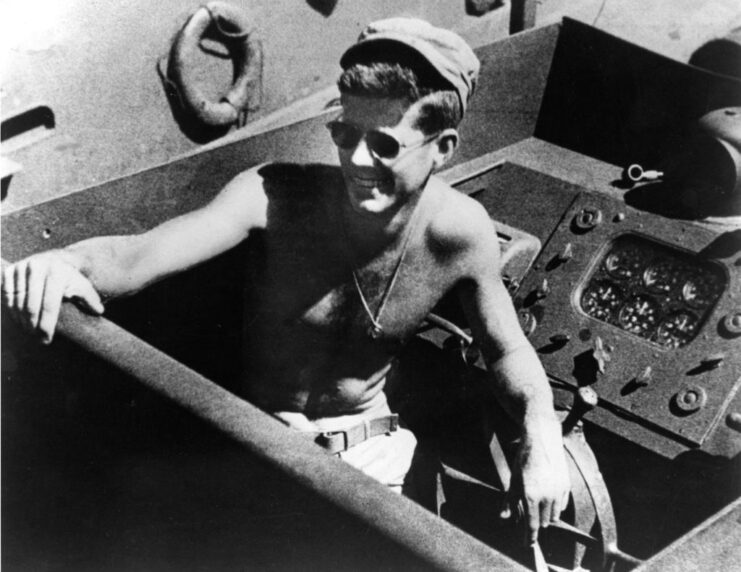
In 1940, John F. Kennedy initially planned to attend Yale Law School, but reconsidered when the specter of war loomed. Enlisting in the military proved challenging due to his medically disqualifying lower back issues. A friend of his father’s played a crucial role in facilitating Kennedy’s entry into the US Naval Reserve.
In April 1943, Kennedy assumed command of PT-109, an 80-foot torpedo boat that was rammed and sunk by a Japanese ship while conducting a mission with 14 other vessels. Displaying remarkable courage, he successfully guided his crew to shore and, through determined efforts, ensured their survival. After an encounter with an Islander, Kennedy carved their location into a coconut shell and requested they be rescued, something that occurred seven days later.
His heroic actions earned him various accolades, including the Navy and Marine Corps Medal and a Purple Heart. The tale was a prominent narrative during his 1960 presidential campaign and was among the reasons why he was able to secure the presidency for himself.
On November 22, 1963, while riding in a presidential motorcade through Dallas, Texas, Kennedy was assassinated by Lee Harvey Oswald, who shot the president from the nearby Texas School Book Depository.
Lyndon B. Johnson
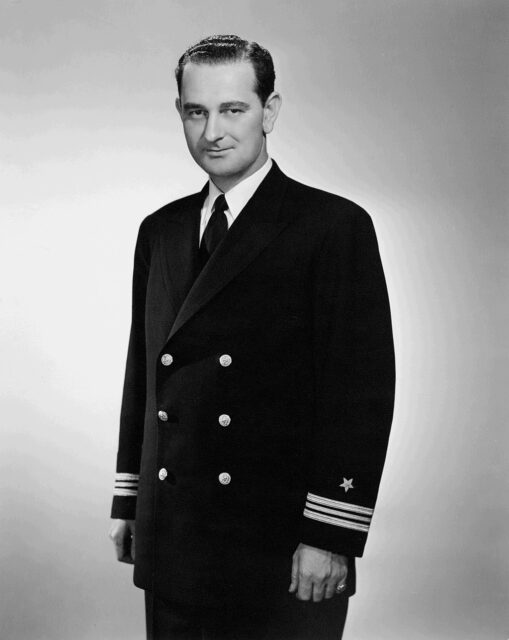
At the time of the Japanese attack on Pearl Harbor, Lyndon B. Johnson had already held a congressional position for four years. As a member of the US Naval Reserve, he received the call to duty merely three days after the assault.
Due to his close relationship with President Franklin D. Roosevelt, he was tasked with assessing conditions in the southwest Pacific. Johnson subsequently served under Gen. Douglas MacArthur, overseeing bombing strikes in New Guinea.
While overseas, Johnson carried a video camera to document the conditions faced by servicemen. On one of these missions, the aircraft he was aboard faced intense enemy attacks, losing an engine, but managing to complete its task. For his valor during the incident, the future president was awarded the Silver Star.
Richard Nixon
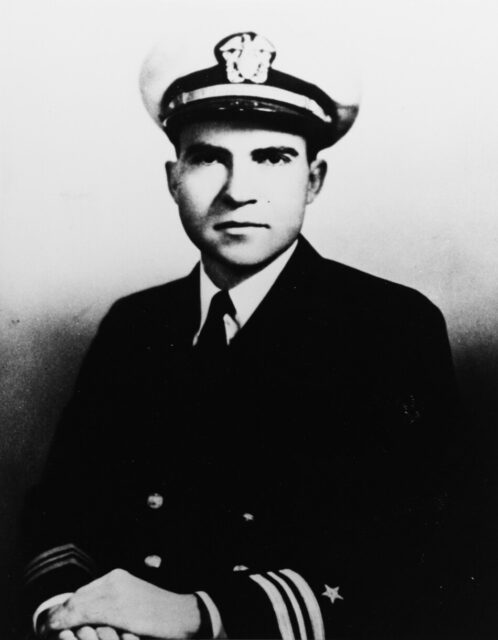
When World War II erupted, Richard Nixon was employed in the Office of Price Administration. His government position and adherence to the Quaker faith made him eligible for a draft deferral. However, opting for a different path, he enlisted in the US Navy.
Nixon initially served as the commander of Naval Air Station Ottumwa. Desiring more active involvement, he sought sea duty and received a promotion to lieutenant. He took command of the Small Craft Action Teams (SCAT) forward detachments stationed at Bougainville, Vella Lavella and Green Island.
Following his military service, the future president was honored with a Navy Letter of Commendation for his “meritorious and efficient performance of duty as Officer in Charge of the South Pacific Combat Air Transport Command.”
Gerald Ford
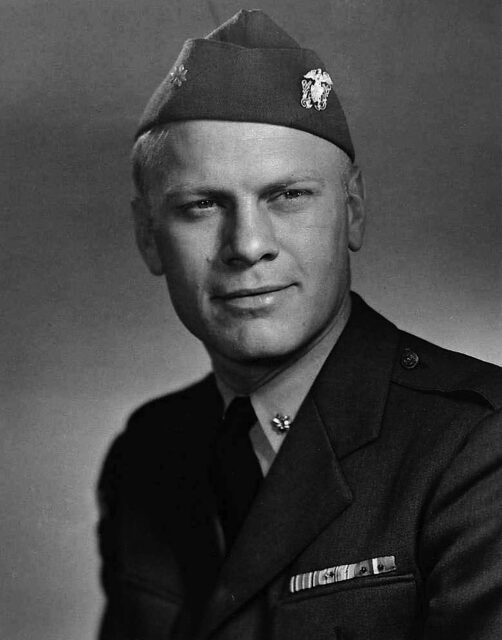
After the Japanese attack on Pearl Harbor in December 1941, Gerald Ford enlisted in the US Navy. Commissioned as an ensign in the Naval Reserve, he commenced active duty at the V-5 instructor school in Annapolis, Maryland. Following this, he served as an instructor at the Navy Pre-Flight School in Chapel Hill, North Carolina, where, in addition to teaching, he coached such sports as swimming, football and boxing.
In June 1942, Ford earned a promotion to lieutenant, junior grade, and the subsequent year was promoted again to lieutenant. Shortly thereafter, he joined the USS Monterey (CVL-26), aboard which he served until 1944.
As part of the Monterey‘s crew, Ford actively participated in intense action, including securing Makin Island in the Gilbert Islands and various carrier strikes. He also saw action during the Battle of the Philippine Sea and played a role in the American landings on Kwajalein, Eniwetok, Mindoro and Leyte.
Following Typhoon Cobra, Ford was reassigned to the Navy Pre-Flight School at Saint Mary’s College of California, where he collaborated with the Athletic Department until April 1945. After, he served as a staff member at the Naval Reserve Training Command at Naval Air Station Glenview, Illinois.
Jimmy Carter
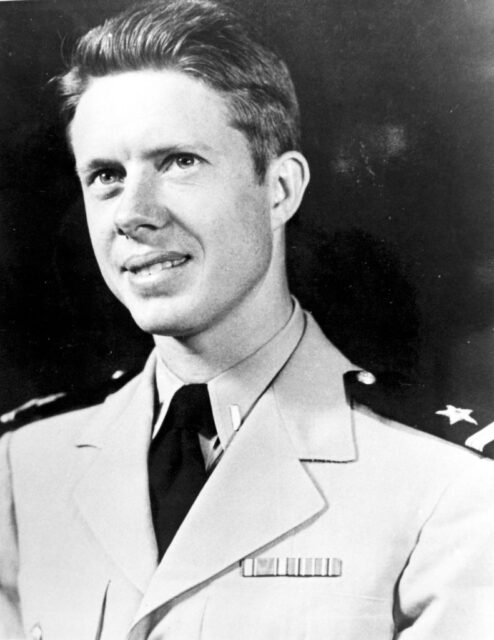
The longest-lived president in American history, Jimmy Carter is also a military veteran, having served in the US Navy. After graduating from the US Naval Academy in 1946, he underwent officer training for submarine duty, receiving an assignment aboard the USS Pomfret (SS-391), followed by the USS K-1 (SSK-1).
Under Hyman G. Rickover, Carter became involved in the Navy’s nuclear program in the 1950s. In 1952, he saved Canada from nuclear catastrophe by leading a team of 23 sailors to change the reactor at Chalk River Labs, near Ottawa, which had suffered a partial meltdown. The future president and his team were successful, although they did expose themselves to radiation in the process.
Ronald Reagan
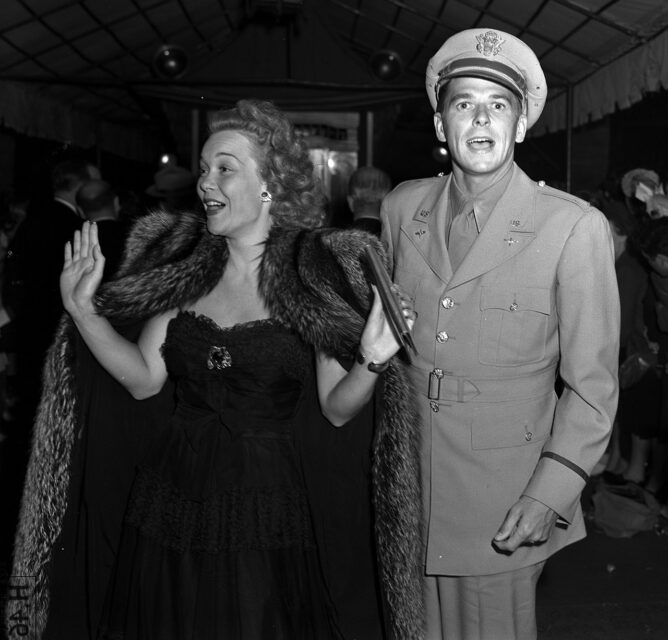
Ronald Regan wasn’t just a US president, he was also a celebrated actor and military veteran. In 1937, he joined the Army Enlisted Reserve and, four months after the US entry into World War II was called up for active service. However, he had incredibly poor eyesight, which kept him from being deployed overseas.
Initially tasked with being a liaison officer for the Port and Transportation Office, Reagan eventually requested a transfer to the US Army Air Forces (USAAF), with whom his job was public relations. He went on to play a pivotal role in the First Motion Picture Unit, which made films designed to encourage the American public to support the war effort. He helped produce around 400 movies in this capacity.
George H.W. Bush
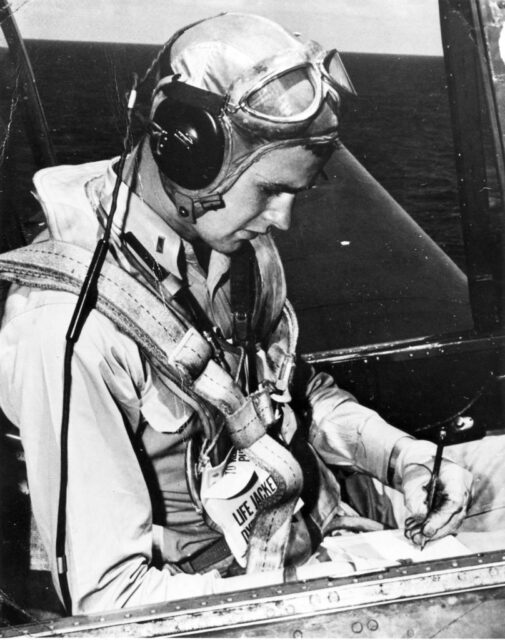
George H.W. Bush was a US Navy pilot in the Pacific during the Second World War. He enlisted six months after the Japanese attack on Pearl Harbor, which happened immediately after his 18th birthday. He entered flight training school and, for a time, was one of the youngest naval aviators in US history.
Bush was assigned to the escort carrier USS San Jacinto (CVL-30) as a torpedo bomber pilot flying TBF Avengers. He was shot down after dropping bombs on Japanese positions on Chichijima. He was rescued after four hours at sea, and took part in other rescue operations afterward, as well as combat operations.
He was awarded the Distinguished Flying Cross and other citations for his bravery during the war.
George W. Bush
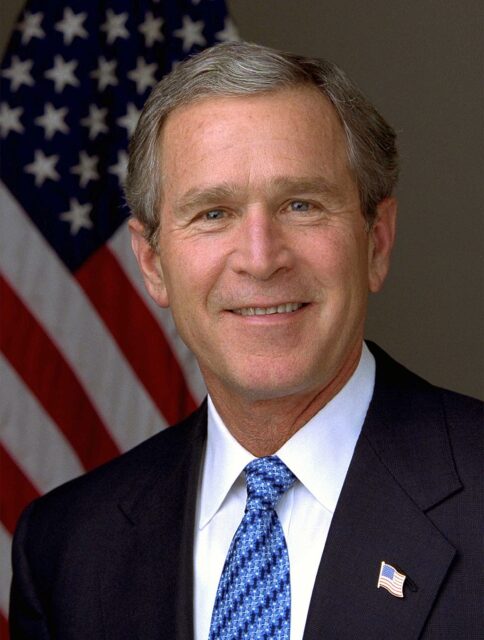
George W. Bush’s military service is a controversial topic. He enlisted in the Texas Air National Guard in 1968, while the Vietnam War was still ongoing, and was assigned to 147th Fighter-Interceptor Group. During this assignment, he learned to pilot Convair F-102 Delta Daggers.
Serving until 1974, he ran into trouble when he failed to meet a number of requirements. This came to light decads later during his presidential campaigns, with many questioning if he’d fulfilled his obligations to the Texas Air National Guard.
More from us: The ‘Saving Private Ryan’ Detail Most Viewers Missed – It Changes Our View of the Film
To date, he’s the last US president to see military service.
